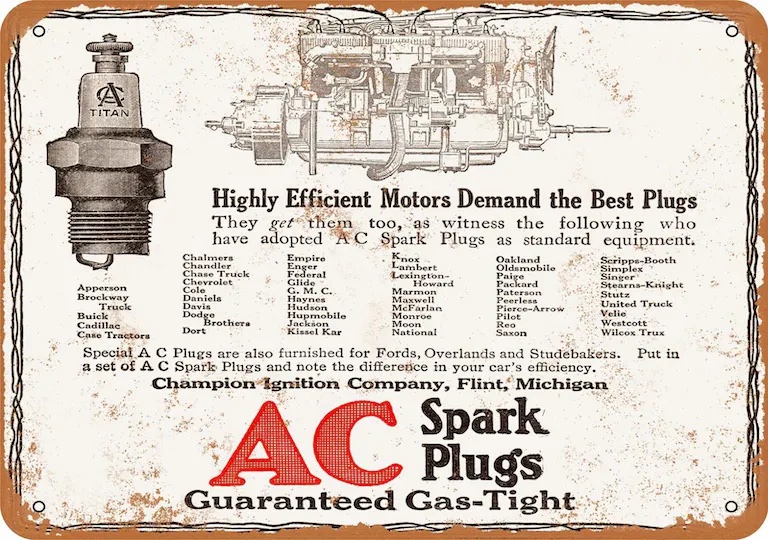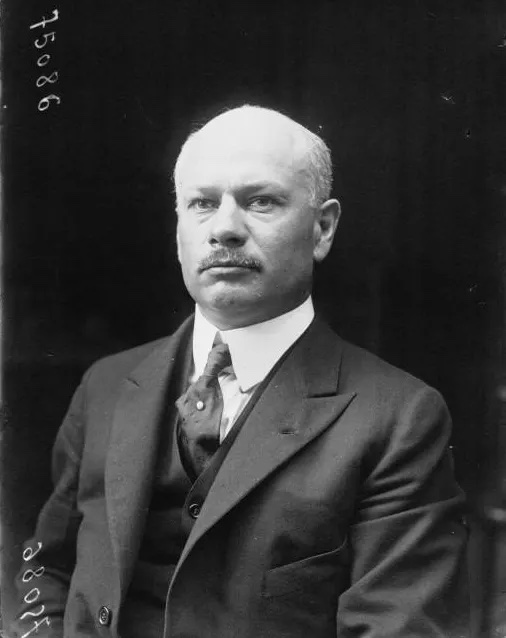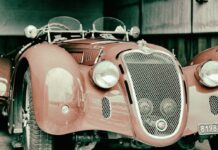Lightning can indeed strike twice in the same place, at least if we’re talking about business. For example, both American luxury automotive brands Cadillac and Lincoln were founded by the same person, Henry Leland.

Likewise, two of the most popular brands of spark plugs were started by the same individual. You might think Champion brand spark plugs were named for racing success, but in fact they were named after the company’s original founder, Albert Champion. And if Champion’s initials evoke the name of another brand of spark plugs for you, AC, that’s not a coincidence. Albert Champion also founded the AC spark plug brand.

Albert Champion was born in Paris in 1878. By the time he was in his teens in the 1890s, the industrial world was in the midst of a bicycling craze, a fad that would provide much of the foundations for both the automotive and aviation industries. Not only did the Wright brothers build their famous Flyer in the back of their Dayton, Ohio, bicycle shop, another pair of siblings, John and Horace Dodge, who were Henry Ford’s primary suppliers before starting their own eponymous car company, got their start inventing and selling bicycle components in Windsor, Ontario, just across the Detroit River.

Young Champion got a job working as an errand boy for a Paris bicycle factory. Apparently his prowess as a bike messenger caught some attention, and his supervisors encouraged him to start racing. Considered a prodigy at the sport, he won championships on both sides of the Atlantic Ocean, including the prestigious 1899 Paris-Roubaix race. Like another successful cycling champion, Barney Oldfied, Albert gravitated to powered racing, and while in the United States he started to race both motorcycles and cars. Taking on the famous Packard “Gray Wolf” racecar on Brighton Beach in Brooklyn, New York, Champion had a bad wreck, requiring a lengthy convalescence. While recuperating in France, he took up an interest in the mechanical side of early automobiles, particularly electrical components like magnetos and spark plugs. According to at least one source, he patented a spark plug of his own.

Returning to the United States in 1905 and with backing from the brothers Robert A. and Frank D. Stranahan, Champion opened up a small factory in the famed Cyclorama building in Boston’s South End. The Albert Champion Company imported French electrical parts, including magnetos and components made by the Nieuport aircraft company. In 1907, the company also started manufacturing spark plugs of Champion’s own design, the first in the U.S. to use porcelain ceramic insulators made with kiln-firing clay he imported from France. Ceramic made a superior insulator as well as protecting the center electrode from moisture and engine heat.

At the turn of the 20th century, it was not unusual for companies to be named after their founders, who didn’t actually have financial control over the venture, like The Henry Ford Company, Mr. Ford’s second car company, which became the basis for Cadillac after his backers gave Henry the boot.
In 1908, Albert Champion left the company. Some sources say the Stranahans forced him out, while others say that he chafed under their control and left voluntarily. In the summer of 1908, Champion fortuitously met William C. Durant, who controlled the Buick Motor Company, at the Boston Buick dealership. Buick was by then one of America’s leading automobile companies. Durant was interested in some of Champion’s spark plug prototypes. Buick then was sourcing spark plugs from the Rajah company, and Durant thought he could manufacture Champion’s design cheaper than buying them, so he set up a spark plug company with Champion. One could say that Albert Champion was the, ahem, spark behind General Motors, as one week after Champion arrived in Flint with his wife, younger brother, and eleven employees, Durant incorporated General Motors, soon afterwards purchasing Cadillac, Oldsmobile, and what became GMC.
Champion incorporated the Champion Ignition Company in October 1908, and the new spark plug company’s first office was on the top floor of Durant’s Buick plant. Although the company was named after Albert Champion, his former partners were already selling a Champion-branded spark plug, so Champion Ignition Company sold its spark plugs under the AC brand.
As GM grew, so did the fortunes of Albert Champion and his new venture. After the DuPont family, which had a controlling interest in General Motors, forced Durant out of GM and installed Alfred P. Sloan to run the automaker, in 1916 Sloan reorganized the company and eventually made the spark plug operations a free-standing division within GM, which produced spark plugs, speedometers, and other electrical components for GM as well as other manufacturers. Speaking of Champion, Sloane said, “The keynote of Champion’s success was that he was never satisfied … his mind was open to the necessity for constant improvement.”

While Albert Champion was having some success with the Champion Ignition Company in Flint, the other Champion spark plug company, run by the Stranahans, was having difficulties in Boston. By 1910, the Stranahans were $20,000 (approximately $600,000 today) in debt. Then a savior in the form of the Willys-Overland Motor Company appeared. While Willys might today be known as a trim line for Jeeps or from a Grateful Dead lyric, 114 years ago it was one of the leading automakers in the world. Willys-Overland offered the Stranahans a contract to become their exclusive providers of spark plugs, on the condition that the brothers and their company move to Toledo, where Willys was located (and where Jeeps are still made).
The Stranahans became pillars of the Toledo community, and Champion Spark Plug got on firmer financial ground. A couple of years later, Champion signed a similar contract with a small family-owned car company about an hour’s drive north of Toledo. The family might have been small, but the automaker it owned, Ford Motor Company, was selling hundreds of thousands of cars a year by then. That $20,000 debt was erased quickly, and the Stranahans became very, very wealthy.
After the Stranahans moved their company to Toledo, they incorporated as the Champion Spark Plug Company in 1910. Claiming prior rights to the Champion brand name, having used it since 1905, the Stranahans sued Albert Champion and the Champion Ignition Company of Flint in United States federal court. After the lawsuit dragged on for more than a decade, an out-of-court settlement was reached in 1922, resulting in Champion Ignition Company being renamed to AC Spark Plug Company. As mentioned above, AC was made its own division of General Motors, in 1927, and Sloan named Albert Champion president of the company that bore his initials.
While the Stranahans became respected members of Toledo’s high society, leaving their massive estate to the public as a park, Albert Champion had a less savory end. In October 1927, just a few months after AC Spark Plugs received enormous publicity as the plug of choice for Charles Lindberg’s pioneering cross-Atlantic flight, Champion (ironically a notorious philanderer) collapsed of cardiac arrest after supposedly being punched by his second wife’s married lover.
As the automobile industry experienced explosive growth in the 1910s and ’20s, both the AC and Champion spark plug companies thrived. Unlike many obscure and abandoned component and accessory brand names from the early automotive age, both brand names that honor Albert Champion survive today. In the 1970s, the AC Division of General Motors was merged with Delco (originally the Dayton Engineering Laboratories Company, when Charles Kettering was busy there inventing the electric self-starter) to form ACDelco, which produces about 70,000 different components for GM and other companies. Champion is part of the Federal-Mogul family of companies.
Author’s note: Because there were two different companies named Champion that made spark plugs, there is considerable confusion and inaccuracy in many, perhaps most, of the sources regarding which company was named what and when. I believe that I have properly clarified the matter, but if I have made any errors that you are aware of, or if you can add to the story, please make a comment below.
Report by Ronnie Schreiber for hagerty.com











